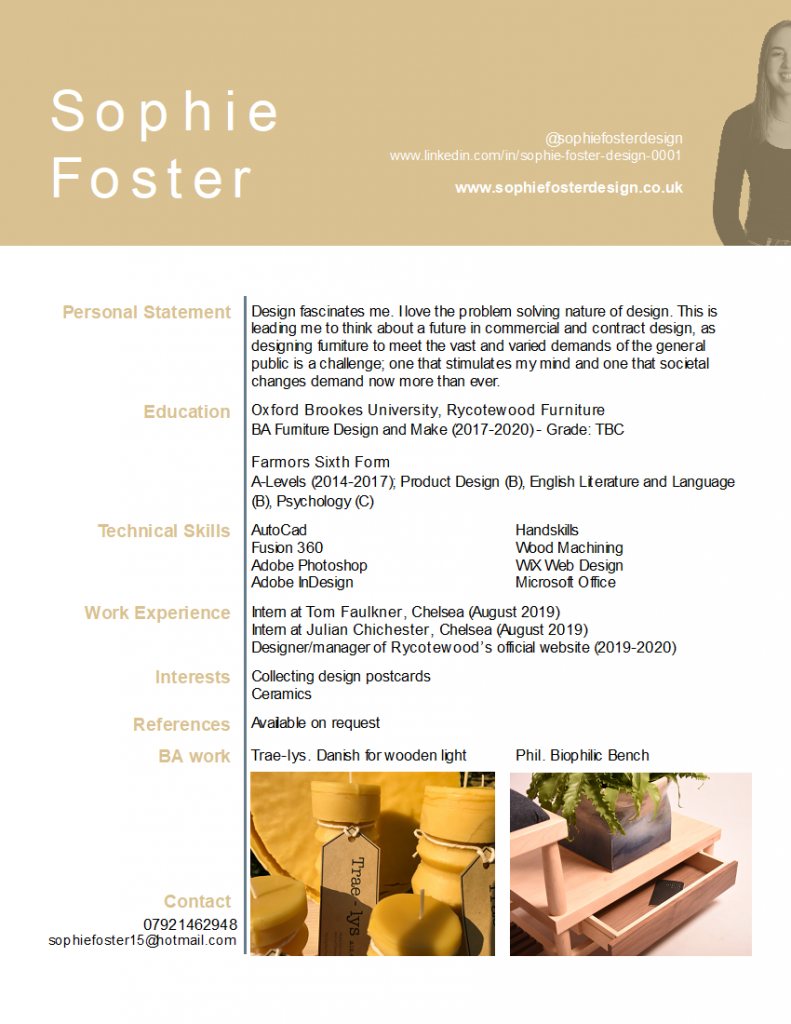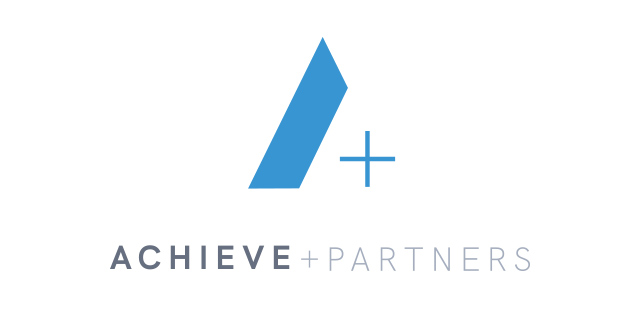Job Hunting and Retraining
There are a wide range of exciting career opportunities in the UK furniture and furnishing industry.
Whether you are a school leaver looking for your first opportunity, or an experienced team member wanting to upskill, the apprenticeship route may be a good fit for you. The apprenticeship route can also present excellent opportunities for those looking to re-skill.
Apprenticeships offer:
- Paid and protected study time
- No debt or student loans!
- Training tailored to your workplace, organisation, and industry
- Nationally recognised work-based qualification and in many instances, professional certification
- Better career progression with study pathways all the way to postgraduate level
If you are looking to upskill in your current role, do not be put off by the term ‘apprenticeship’. It is simply the name of a training tool. You do not have to be called ‘Apprentice’ in your role title and your salary package does not decrease to apprenticeship wage.
My Furniture Career
FIESTA works exclusively with My Furniture Career (myfurniturecareer.org.uk) the only one-stop, dedicated recruitment website where candidates can find job opportunities from companies operating in all sectors of the wider UK furniture and furnishings industry – from beds and kitchens to textiles and upholstery. For your first step in an exciting career in the Furniture and Furnishings industry click here.
A Guide to Finding a Job in the Furniture Industry
Written by Dr Lynn Jones (lynnjonesassociates.com) a furniture recruitment specialist who has helped hundreds of graduates and school leavers find work in the furniture and interiors industry.
Whether you are looking for your first job or for a new role, looking to retrain or considering a whole new direction I help people like you find jobs, advising them along the way whilst speaking with employers about the kind of people and skills they need, matching the jobs to the people and the people to the jobs. It is a hugely rewarding role which I enjoy immensely.
The jobs market is changing with fewer jobs, uncertain finances and many people job searching at the same time, might there be other ways of finding work and realigning ourselves for new roles within the furniture industry?
There are opportunities arising, alongside a great many people who have had time to reconsider what they might do next. There are new kinds of apprenticeships now too, degree courses, short courses, private courses and even PhDs for people wanting to work in the furniture and interiors industry at any level. With the future uncertain, the burden of student loans hovering and the jobs market sparse, what should we all do next?
Speaking with employers, potential employees and those thinking of starting their own business or even wanting to volunteer or train to teach, the aim of this feature is to give advice to anyone wanting to work in the furniture industry.
NEXT STEPS
It may take time to find your ideal role but there are loads of ways you can prepare so that you are ready for when things do emerge, because when they do, you could find yourself in a sea of competition. The most important thing to note is that you are in control of how you will stand out. So, with a pro-active attitude and a pen in hand, here are some top ten tips to help you get a job or to find your place in the furniture industry:
Start to list your ideals. Do you know what kind of job you want? Often people do not know what the variety of jobs are in the furniture industry. Find out. Read websites, blogs, vlogs…and talk to people. Role titles can be confusing and will include buyer, marketing, sales, project manager, as well as design, design engineer, technical designer, CAD designer, upholstery designer and a variety of different furniture making roles.
Research people and companies and what they do. Remember the people you have worked with in the past, or those who were in the years above you at college or at school – what are they doing now? Find them and talk to them. They all have contacts and may know of jobs arising way before they are advertised. Many jobs in fact are never advertised. Talk to your tutors and any professionals you’ve met before. Most people will be happy to talk to you on the phone. Send them a short email first asking when is a good time to call. Keep it brief but polite. Research websites of people and companies you admire and might like to work with. If you dig around a website there is often a tab called careers, or people or the team. These can be really helpful as they explain what people do in the roles they have.
Be ready to show your CV to anyone who asks to see it. It should live on your desktop so you can update it or tailor it for different purposes. Your CV should be no longer than one page of A4, it should be graphically eye catching and include an image of you on it ‘looking busy and employable’. Be honest and omit any padding. Highlight any work experiences. A CV should start with a brief, succinct personal statement which can be later tailored for a Press Release. Design a business card in the same graphic style as your CV (as soon as lockdown has ended you will need these for when you visit people, shows and potential employers). And NO spelling mistakes!! People will quickly lose faith in you: if there are mistakes on your CV, people will think you must make mistakes elsewhere.

Be ready to show your work but beware of a portfolio that it too large. People are busy and will often only scan through it. Be selective and only show the work you are most proud of. People love stories, so select work with half a mind on the story it tells.
Tidy your internet presence If you plan to direct people to Instagram to see your work, create a new Instagram (or tidy your existing one) to treat like an ever-changing portfolio about you and your work. Make best use of LinkedIn, designed specifically for the business community. It allows members to establish and maintain networks of people they know and trust professionally. Writing articles and posts keeps people informed of what you care about and if these get liked or shared, you can see new people with whom you might want to connect thus widening your own network, but do keep on top of it and manage it well.
Write social media articles and posts which keep people informed of what you care about and if these get liked or shared, you can see new people with whom you might want to connect.
Use social media messaging systems which are direct and useful and you can attach things and use it in a similar way to emails. Your profile can include many things you might include on a website. I have no website, so for me LinkedIn is the most important of the available social media. If you do want to have a website, do your research and find out which are free, how good they are, and whether there are other websites or platforms you can be part of, e.g. Flickr, Arts Thread and Behance.
Use images and photographs to show that you are creative especially if you are applying for design jobs. Keep designing and making things even if you don’t have access to a workshop right now. Use any materials you can lay your hands on. Show your most interesting results on Instagram perhaps. Experiment, be playful and be engaging. If you are looking to move into other roles such as project management, sales or marketing you still need to get noticed, so creative writing (on the introduction to your CV even) might attract attention in a similar way.

Stay active; write and share articles about things you care about. Visit online talks, shows (Clerkenwell Design week; London Design Festival etc. will all be doing online versions this year) and interviews. Set up regular times in your diary to search Vimeo, YouTube, Dezeen and others and respond to them. Enter competitions. Start a professional diary keeping a log of all your job research and other related activity.
Geography: where do you want to work and live and do you have ideals about commuting? To you want to live in a city or by the sea?
INTERVIEW TIPS:
Having got through the first hurdle and bagged yourself an interview you need to be prepared. Interviews are two-way things: you need to know as much as possible about what you are letting yourself in for as much as an employer needs to know as much as possible about you. They are also valuable learning experiences, especially for your next interview if you don’t get (or decide you don’t want) this one. With this in mind here are my top ten tips:
- Be diligent. Employers are looking for passion and initiative. Research the company and competitors.
- Don’t dish your former employer. This is like going on a date and complaining about your ex the entire time. No one wants to hire someone prone to negativity and gossip. Focus on where you want to go, not where you want to leave.
- Be articulate Like, um, I mean, this is so not like, where like, OMG, you can just like, uh, say whatever! Break the bad habit of using filler words. Practice, record yourself, practice more.
- Make eye contact Who are you talking to? Is it someone on the floor? Out the window? Eye contact conveys confidence. Shifting, wandering eyes convey insecurity.
- Use confident body language You know about the firm handshake, but what about the rest of your body? Don’t fidget. Don’t cross your arms. If you are listening and engaged, it will show.
- Listen to what someone is asking you. Make sure you understand the intent of the question before you jump into an answer.
- Interview your employer. When it’s time to ask questions, have some good ones. Ask about the core values and culture of the company, the long-term vision and the definition of success in the role.
- Be You. Be professional, but let your unique personality and perspective come through. Share how you grew up and why you have the values you have if relevant.
- Stay on topic. Do not babble or wander off topic. When asked a question, think of answering like you would in a spelling bee. Give your answer to the question asked as thoroughly as you can. Then stop talking.
- Smile! Be punctual. Make people want to work with you.
Employers Perspective:
Always research the culture of the company, either from properly scrutinising their website, searching on all the tabs, or doing a wider search on Google. There will be articles about them, little films on Vimeo or YouTube or features on LinkedIn for example. Ask your contacts what they know about the companies you like. Taken from conversations with employers, here are ten top interview tips from employers:
“When I’m hiring people…
- I look for someone who is curious.
- I look for someone who has tried things just for the heck of it and has taken risks.
- I look for someone who is confident and professional.
- I look for someone who can communicate his or her thoughts clearly and who has opinions.
- I look for someone genuine.
- I look for someone who has taken the time to investigate our organisation and has questions about it.
- I look for someone who is looking to learn and can tell me a few important things s/he has already learned.
- I look for someone with a sense of humour.
- I look for someone who has the basics of good maths and English skills.
- Lastly, I look for someone who isn’t afraid of me, managers in general, or anyone else.
Where are jobs advertised?
Not all jobs are advertised so your network of contacts is critical. There are many people who know about what’s happening inside their company and what’s on the horizon jobs wise. If you look at recruiters like Indeed remember you are looking alongside thousands of others. Think more niche too. Contact me. I issue a monthly e-list of vacancies I’m helping furniture industry employers to fill. Many companies do put vacancies on their websites or have tabs inviting people to contact them if they are looking for work, but they are not always easy to find. Treat this like a research project and spend a day taking notes, prioritising things and who to call. Don’t be afraid of calling people or sending a short email asking when’s the best time to call. And keep a regular eye on the websites of the trade associations that belong to FIESTA (BCFA, BFM, National Bed Federation, TKET, BIKKBI, KBSA and AMUSF) as they contain loads of regular features, jobs, interviews, and articles.
Investigate the places different sectors of the industry advertise or announce developments:
https://www.furniturenews.net/
https://www.thefurnishingreport.com/
https://britishfurnitureconfederation.org.uk/
https://www.furnituremakers.org.uk/
Useful books include Don’t Get a Job, Make A Job by Gem Barton; The Design Student’s Handbook by Steve Rutherford and Jane Bartholomew (I also co-wrote the Chapter – What Next?).
Further Research:
Search furniture industry people, often interviewed on Vimeo; YouTube; TED talks; Vitra (new 90 min film: History of 20th C. Chairs) and other companies who talk about what they do; read Dezeen; listen to Podcasts: e.g. Grant Gibson: Material Matters; Debbie Millman: Design Matters; Design Insider at www.designinsiderlive.com







